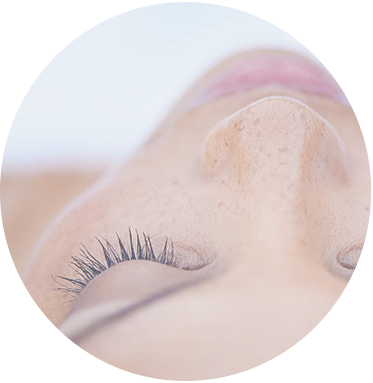How Reflexology works
Blood Flow
There is moderate evidence that reflexology may work through altering organ-specific blood flow. Jones et al. (2012) applied a four to five minutes reflexology treatment and found an immediate, significant decrease in cardiac index, (cardiac output from left ventricle relative to body surface area), in the treatment group receiving reflexology to the heart point on the left forefoot relative to the control group receiving reflexology to the heel region that contains no points related to heart function.5
Sudmeier et al, (1999) compared blood flow to the right kidney in subjects that received foot reflexology to zones corresponding to the right kidney to subjects receiving foot reflexology to non-kidney points. They found a significant decrease in the resistive index of vascular flow to the right kidney for those receiving foot reflexology to zones corresponding to the right kidney, and no change in the group treated on non-kidney points. The decrease in the resistive index indicates an increase in renal blood flow.6
Lu W.A. et al (2011) demonstrated reductions in blood pressure in healthy individuals and those with coronary artery disease 30 and 60 minutes after receiving a 60-minute treatment of foot reflexology to all reflex zones in both feet.7
Parasympathetic Nervous System
There is moderate evidence that reflexology may work by modulating the autonomic nervous system. Lu W.A. et al (2011) demonstrated enhanced vagal modulation and lower sympathetic modulation in healthy individuals and those with coronary artery disease 30- and 60-minutes after receiving a 60-minute treatment of foot reflexology to all reflex zones in both feet.7
De Oliveira B. et al (2017) demonstrated a decrease in parasympathetic nervous system (HRV analysis) activity in elderly individuals with chronic non-radicular low back pain following five 20-minute weekly sessions that focused on the “reflex” areas of the spine, hip, and primary and secondary sciatic nerve areas, but not following five 20-minute weekly general massage sessions to the feet.8
Central Nervous System
Nakmura et al (2008) used functional magnetic resonance imaging to determine if there is a corresponding activation of the somatosensory cortex when stimulating specific points on the feet. They assessed somatosensory cortical response to stimulation of the eye, shoulder, and small intestine on the left foot. They found reflexology applied to these areas on the foot, activated the somatosensory areas corresponding to the eye, shoulder, and small intestine, and feet.9
Natarajan et al (2004) examined changes in EEG in response to sound (music) or reflexology stimulation vs. the normal state. They found the EEG response to sound or reflexology stimulation became less chaotic indicating a more relaxed state. This did not occur in the normal state.10
References
- Gravett P. Making sense of English in alternative medicine. Edinburgh: Chambers; 1993.
- Goodwin H. Reflex zone therapy. In: Rankin-Box D, editor. Complementary health therapies. A guide for nurses and the caring profession. London: Chapman Hall: 1988.
- Nurul Haswani Embong, Yee Chang Soh, Long Chiau Ming, Tin Wui Wong. Revisiting reflexology: Concept, evidence, current practice, and practitioner training. Journal of Traditional and Complementary Medicine; 2015;5(4):197-206
- Wing-Fai Yeung, Ka-Fai Chung, Maggie Man-Ki Poon, et al. Acupressure, reflexology, and auricular acupressure for insomnia: A systematic review of randomized controlled trials. Sleep Medicine. 2012;13(8):971-984.
- Jones J, Thomson P, Lauder W, Howie K, Leslie SJ. Reflexology has an acute (immediate) haemodynamic effect in healthy volunteers: a double-blind randomised controlled trial. Complement Ther Clin Pract. 2012 Nov;18(4):204-11.
- Sudmeier I, Bodner G, Egger I, Mur E, Ulmer H, Herold M. Anderung der nierenduchblutung durch organassoziierte reflexzonentherapie am fuss gemessen mit farbkodierter Doppler-sonographie [Changes of renal blood flow during organ-associated foot reflexology measured by color Doppler sonography]. Forsch Komplementarmed. 1999 Jun;6(3):129-34. German.
- Lu WA, Chen GY, Kuo CD. Foot reflexology can increase vagal modulation, decrease sympathetic modulation, and lower blood pressure in healthy subjects and patients with coronary artery disease. Altern Ther Health Med. 2011 Jul-Aug;17(4):8-14.
- de Oliveira BH, da Silva AQA, Ludtke DD, et al. Foot Reflexotherapy Induces Analgesia in Elderly
Individuals with Low Back Pain: A Randomized, Double-Blind, Controlled Pilot Study. Evid Based Complement Alternat Med. 2017;2017:2378973. doi:10.1155/2017/2378973
- Nakamaru T, Miura N, Fukushima A, Kawashima R. Somatotopical relationships between cortical activity and reflex areas in reflexology: a functional magnetic resonance imaging study. Neurosci Lett. 2008 Dec 19;448(1):6-9.
- Natarajan K, Acharya U R, Alias F, Tiboleng T, Puthusserypady SK. Nonlinear analysis of EEG signals at different mental states. Biomed Eng Online. 2004 Mar 16;3(1):7.













